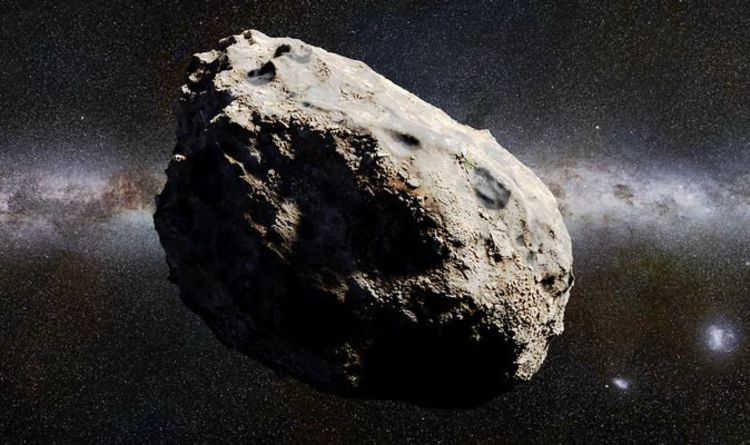The asteroid, dubbed by astronomers Asteroid 2019 QY3, is flying alongside Earth on a close approach trajectory. NASA expects the asteroid to close-in on Earth in the morning hours of Thursday, September 26. At its closest, the asteroid will approach Earth around 8.35am BST (7.35am UTC). When this happens, NASA said the asteroid will zip by at speeds of around 9.38km per second or 20,982mph (33,768kph).
What do we know about Asteroid 2019 QY3?
Asteroid 2019 QY3 is a large space rock trapped within the confines of the inner solar system.
The asteroid is an NEO or Near-Earth Object, meaning it does not fly past the orbit of Mars and the asteroid belt.
NEOs are all comets and asteroids that fly close to Earth and can occasionally cross paths with our planet.
According to NASA’s Jet Propulsion Laboratory (JPL) in California, the asteroid is also classified as an Apollo-type rock.
Apollo-type asteroids cross the Earth’s orbit in a similar way to Asteroid 1862 Apollo.
NASA said: “As they orbit the Sun, Near-Earth Objects can occasionally approach close to Earth.
“Note that a ‘close’ passage astronomically can be very far away in human terms: millions or even tens of millions of kilometres.”
The space agency estimates the asteroid measures somewhere in the range of 137.8ft to 311.7ft (42m to 95m) in diameter.
At the upper end of NASA’s scale, the asteroid is just three feet shorter than Big Ben’s clocktower in Westminster, London.
Near-Earth Objects can occasionally approach close to Earth
NASA
The asteroid is also taller than the Statue of Liberty in New York and is wider than the wingspan of a Boeing 747-8.
At the lower end of the size estimate, the rock is about five times longer than a London double-decker bus.
Any asteroid this big would survive the fiery descent towards the ground through Earth’s atmosphere.
Will the asteroid strike our planet on Thursday, September 26?
Despite its imposing size and speed, NASA does not expect Asteroid QY to hit our home planet.
During tomorrow’s flyby, the closest the asteroid will approach Earth is about 0.01455 astronomical units (au).
A single astronomical unit measures the distance from the Sun to the Earth – 93 million miles (149.6 million km).
In other words, the asteroid will miss the planet by a margin of 1.35 million miles (2.17 million km).
The distance is the equivalent of 5.66 times the distance between the Earth and the Moon.
Source: Read Full Article
